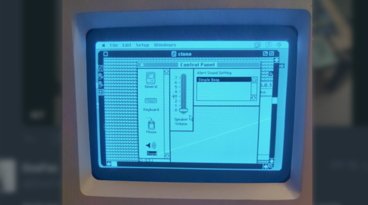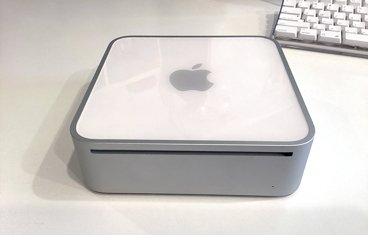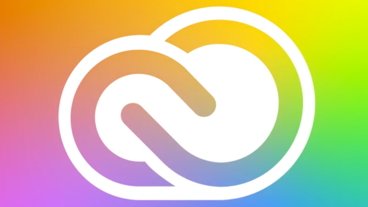Apple to drop WebObjects in Snow Leopard Server
WebObjects is Apple's enterprise framework for developing web applications and the company's Java web application server that deploys them. Apple acquired the product when it bought NeXT in the final days of 1996.
Originally priced at $50,000 per deployment license, Apple dramatically lowered the price of WebObjects to $699 in 2000 and then in 2005 bundled the software for free deployment with Mac OS X Server. Later this year however, WebObjects will disappear entirely in the release of Snow Leopard Server, which sources say has scrubbed any mention of the deployment runtime.
While Apple's efforts to sell WebObjects to third parties has waned, the company's use of the technology progressively increased. Apple was able to put WebObjects to work immediately in building a new build-to-order online store in 1997 just months after acquiring NeXT. Since then, the company has used WebObjects to build the iTunes Store, its Dot Mac site, iTunes U, and iPhone App Store.
Apple's use of WebObjects appears to have been pulled back in some areas on the MobileMe front, which is in the process of tearing down the old WebObjects-based Dot Mac Groups, Home Page, web mail, and iDisk features and replacing them in part with other technologies. Signup for the MobileMe service is still done via https://secure.me.com/wo/WebObjects/Signup.woa, so it's not as if Apple is retreating away from WebObjects across the board in its MobileMe unit.
Additionally, there's no apparent plans in progress to scale back the company's broad use of WebObjects in its online stores, iTunes, or the App Store, all of which have broken records in online retailing and have scaled impressively as the company experienced dramatic surges of growth.
Instead, it appears Apple is simply reserving WebObjects for its own use rather than continuing to try to sell it to an unappreciative audience that either prefers the immediacy of web development tools like Ruby on Rails, which Apple included with Leopard Server, or the familiarity of PHP and MySQL, which has long been a part of Mac OS X Server.
WebObjects Origins
When Apple acquired NeXT, it was interested primarily in its Unix-based NEXTSTEP operating system which the company subsequently adapted as the foundation of Mac OS X; WebObjects was picked up by Apple for free, despite being the apex of NeXT's focus at the time.
NeXT, founded by Steve Jobs in 1985 after his ouster from Apple, originally built state of the art hardware running an advanced set of development frameworks on top of Unix, resulting in a powerful computing system that was far ahead of its time. While Jobs' futuristic NeXT Cubes of the late 80s offered great performance value for their price in comparison to Unix workstations and high end Macs, there were no budget model offerings due to an agreement pressed by Apple that prevented NeXT from competing in the consumer market.
That forced NeXT into a tight niche that made its products popular only among higher education, research, investment houses and intelligence services, all of which appreciated its stability and performance over the cost savings afforded by lower end hardware. NeXT eventually backed out of the hardware business in 1993 and began selling NEXTSTEP first as an operating system for standard Intel PCs and PA-RISC and SPARC workstations, then as a development layer that could run on top of Sun Solaris or Windows NT.
NeXT even created an open specification for its development frameworks called OpenStep in a partnership with Sun that attempted to make NeXT's development and operating environment the standard for all computers.
After a series of failed partnerships involving IBM and HP (who abandoned NeXT to work on a NeXT frameworks clone with Apple under the name of Taligent) and then Sun (which abandoned NeXT after attention began to swirl around Java), NeXT was left with impressive piles of technology that nobody seemed to want. Microsoft had refused to develop for NEXTSTEP, with Bill Gates famously saying he'd rather "piss on it" than develop software for the platform. Selling an operating system in competition with the Windows PC monopoly was becomingly clearly impossible, even for firms with far more resources than NeXT.
That reality led NeXT to apply its advanced development frameworks as a way to build web applications, resulting in WebObjects in early 1996. The web itself had been developed using NEXTSTEP by Tim Berners-Lee, who in 1990 wrote the first web server and browser on a NeXT computer at CERN. Developing a way to expand simple web pages into dynamic, object-oriented applications appeared to be NeXT's last hope for survival.
Jobs and WebObjects
In a February 1996 interview with Wired, Jobs announced, "The desktop computer industry is dead. Innovation has virtually ceased. Microsoft dominates with very little innovation. That's over. Apple lost."
Jobs said, "the desktop market has entered the dark ages, and it's going to be in the dark ages for the next 10 years, or certainly for the rest of this decade. It's like when IBM drove a lot of innovation out of the computer industry before the microprocessor came along. Eventually, Microsoft will crumble because of complacency, and maybe some new things will grow. But until that happens, until there's some fundamental technology shift, it's just over.
"The most exciting things happening today are objects and the Web. The Web is exciting for two reasons. One, it's ubiquitous. There will be Web dial tone everywhere. And anything that's ubiquitous gets interesting. Two, I don't think Microsoft will figure out a way to own it. There's going to be a lot more innovation, and that will create a place where there isn't this dark cloud of dominance."
In that interview, Jobs underlined three parts to the web: clients, servers and pipes. "On the client side," Jobs said, "there's the browser software. In the sense of making money, it doesn't look like anybody is going to win on the browser software side, because it's going to be free. And then there's the typical hardware. It's possible that some people could come out with some very interesting Web terminals and sell some hardware." It would be another decade before Jobs could unveil the iPhone as "a breakthrough Internet device."
In terms of pipes, Jobs predicted huge growth in selling Internet access. "As for the server market, companies like Sun are doing a nice business selling servers. But with Web server software, no one company has more than a single-digit market share yet. Netscape sells hardly any, because you can get free public-domain software and it's very good. Some people say that it's even better than what you can buy." It would be just a few years before Jobs would turn Apple into one of the largest distributors of the open source Apache web server.
"Our company," Jobs said of NeXT, "decided that people are going to layer stuff above this very simple Web server to help others build Web applications, which is where the bottleneck is right now. There's some real opportunity there for making major contributions and a lot of money. That's what WebObjects is all about." Jobs later added that the web is "more than publishing. It's commerce. People are going to stop going to a lot of stores. And they're going to buy stuff over the web."
By the end of the year, the brand new WebObjects would reach version 3.0 and NeXT would be acquired by Apple. Within the next year, WebObjects enabled Apple to revolutionize its online retail presence. It would subsequently change how people buy music in iTunes, and then set the model for selling mobile software in the iPhone App Store.
WebObjects at Apple
In its first year at NeXT, WebObjects attracted high profile attention from a variety of large corporations from Disney to Dell, including AAA, the BBC, Chrysler, Deutche Bank, Ford, Nike, Nissan, Motorola, and Reebok. Once owned by Apple however, corporate interest began to wane.
Dell, which had just developed its new WebObjects store in December 1996, now scrambled to rid itself of WebObjects under the pressure of Microsoft, cobbling together a replacement built using Active Server Pages that launched in September 1997, just days before Apple's own WebObjects site went online in November. Jobs unveiled the store by presented Michael Dell under a bullseye target, saying "we're coming after you, buddy!"
While WebObjects helped Apple to expand its online retail presence faster, embarrass competing music stores, and leave smartphone software rivals in the dust, the company has had a hard time selling the product to anyone else. In his 1998 autobiography On The Firing Line, then CEO Gil Amelio wrote, "WebObjects looked to be clearly one of the jewels of the NeXT software. It is going to factor importantly into the future. I still can't figure out why it isn't getting more attention from the press."
Without a real server operating system or any Mac server hardware to sell apart from its rebranded PowerMacs sold as Workgroup Servers, Apple decided to port WebObjects from Objective-C to Java in 2000 in order to enable servlet deployment by any Java server. This was also intended to catch the wave of excitement surrounding Java and tap mainstream developers' familiarity with the language.
WebObjects and Cocoa diverge
Apple also floated the idea of changing Mac OS X's Objective-C to read more like Java, but idea that sunk. While WebObjects worked to become more mainstream in the enterprise, Mac OS X was retargeted to consumers, lopping off commonality it once shared with WebObjects, such as EOF database connectivity, which later reappeared in a desktop friendly but very different form in Tiger's CoreData.
What would become Cocoa's Foundation frameworks remained Objective-C, while WebObjects adopted a Java Foundation. This left WebObjects familiar to both Java and Cocoa developers, but clearly in a unique middle ground between both.
In 2006, Apple deprecated its WebObjects development tools along with its Cocoa-Java bridge that so few were using. The latest version of Xcode no longer supports developing new WebObjects applications. Instead, Apple recommends using WOLips, an open source suite of tools that plug into the Eclipse IDE and provide a better development environment for writing Java code than the company's own Objective-C-centric Xcode.
Rumors briefly surfaced about the potential for releasing WebObjects as an open source project, but Apple appears more interested in simply giving the community a liberally open use license to deploy WebObjects. However, the release of Snow Leopard Server will end official support for WebObjects deployment on the Mac, leaving shops that use it to build their own Java deployment server.
 Prince McLean
Prince McLean













 Amber Neely
Amber Neely
 Thomas Sibilly
Thomas Sibilly
 AppleInsider Staff
AppleInsider Staff
 William Gallagher
William Gallagher
 Malcolm Owen
Malcolm Owen
 Christine McKee
Christine McKee










52 Comments
Both of 'em.
(In all seriousness, I used to work with a WO guy about 10 years back... he's retired now.)
Just wanted to drop a line to say thanks for your in-depth articles explaining the pedigree of the technologies that are waxing and waning before our eyes: Webobjects, Ogg, Quicktime...
Your articles do a great job of putting the technology in context of the business world: the struggle for video containers and codecs was well explained in terms of the fight for broswer share, and the to and fro between Apple, MS and the open source crowd.
Thanks and keep it up. These articles with background and texture are so much more interesting than soundbites like "today Apple released the 10A390 buld of technology Y"
Cheers
Gareth Richards
Excellent article by Prince. I didn't know half of the history of WO before reading this, very interesting!
I agree with Jetlife, the articles on AI are always more informative and well-written, unlike sites like Macrumors where they just regurgitate stuff from AI and other sites.
This article is not worth the paper it isn't written on.
If you have a developer account with Apple you can download the following:
WebObjects and Java Developer Support for Snow Leopard build 10A286
Includes WebObjects 5.5 (next version).
so much for your source.
This article is not worth the paper it isn't written on.
If you have a developer account with Apple you can download the following:
WebObjects and Java Developer Support for Snow Leopard build 10A286
Includes WebObjects 5.5 (next version).
so much for your source.
Is that for Snow Leopard Server?